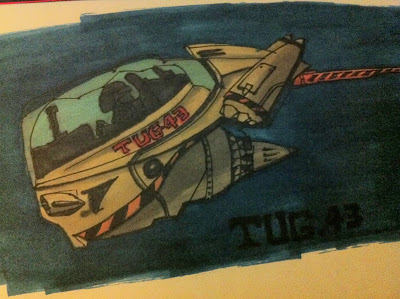 | |||
| TUG - 43 - Mining Cargo Tug Concept. |
A question cropped up:
'How would this mining corporation move Cargo?'
Thus Tug.43 was created as a small media test, using ProMarkers -following on from some of the useful information I had learned while researching the concept artists listed above... Of course this is only one design, in what could have potentially been an endless amount of design possibilities and far for perfection in terms for the actual drawing.
- While Scott Robertson gave insight into design and the necessity of good line drawing. A glimpse of traditional media was picked up in the form of marker usage.
- Fend Zhu gave great insight into.the need to expand the brain's visual library, being able to recall details of objects from the mind and using them to help inform the drawing and design.
- While Francis Tasi touched upon the need for 'Greebles' - an industry term used by both 2d & 3d designers and illustrators to describe the details of complex-looking mechanical elements that are used to add visual interest and complexity to an image. Which in turn touches back upon the need to improve the brains visual library.



